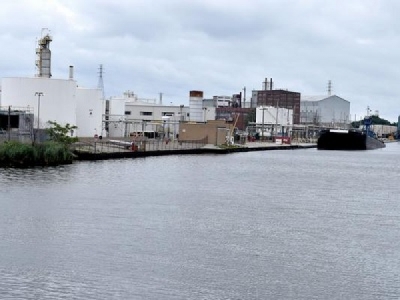
Posted on January 1, 2019
Local environmentalists are calling out a plan to dispose of PCB-contaminated material from the Indiana Harbor and Shipping Canal in an East Chicago waste facility that won federal and state approval.
“It is a serious issue for us,” said East Chicago environmental activist Thomas Frank, of the Community Strategy Group. “We feel the EPA has betrayed the community – it is a bullying of a community of color which has been economically disparaged.”
The U.S. Environmental Protection Agency and Indiana Department of Environmental Management on Thursday announced they’ve approved an Army Corps of Engineers plan to dredge the canal for contaminated material and dispose of it in an open-air facility in East Chicago.
“After a thorough evaluation and with careful consideration of public comments, EPA and IDEM have determined that the confined disposal facility is a safe, proven and cost-effective way to handle this type of waste,” the EPA and IDEM said, in a press release.
Samuel Henderson, staff attorney for the Hoosier Environmental Council, said the joint announcement is “deeply troubling” and ignores the massive public opposition to the project and the profound risks it creates for human health and the environment.
“The EPA and IDEM appear to have abandoned their previous commitments to the people of the affected communities that they would pursue an off-site disposal solution,” Henderson said.
During a more than year-long review, the two agencies said the Army Corps will only need to dredge and dispose of roughly 20,000 cubic yards of material, which includes several identified “hotspots” of high PCB contamination.
Frank said the EPA has “crossed a line in the sand.”
“We don’t want this facility to be a permitted site to accept high levels of PCBs,” he said.
Frank said his group had all the state senators to sign on to their position, as well as the East Chicago City Council and mayor, who passed a resolution in support of it. East Chicago schools also signed on against the permitting. The group also got over 2,000 signatures from residents against it.
“We are pretty confident the local community does not want this,” Frank said. “We feel it is sacrificing the public health of this community.”
Frank also questioned the timing of the EPA announcement, when schools are closed and people are going on vacation for the holidays.
He also said over the last two years the EPA under the Trump administration has been recast in favor of industry.
The Army Corps first planned on dredging 60,000 cubic yards of material, which an official said was a considerable reduction.
Chris Korleski, director of the Great Lakes National Program Office, said new data reviewed by the agencies estimated that roughly 4,000 cubic yards of canal sediment have high concentrations of PCBs.
Korleski said the CDF remains the “only feasible option” for disposing of the material.
In 2017, the federal and state environmental agencies stayed their review of the plan and began a feasibility study to look at alternatives, including using the confined disposal facility, after receiving public comments on the proposal.
“The CDF was designed and constructed for exactly this kind of storage,” he said.
Jean Greensley, a geologist with the EPA Region 5 Land and Chemicals Division, said any existing monitoring of the CDF will remain in place. She said the Army Corps will have air monitors, a gradient inside the facility so contaminants don’t escape; external protections and groundwater systems.
Greensley said the Army Corps will have to maintain the CDF in perpetuity, and that includes air monitoring and any other protections.
Henderson said the claim that the CDF is “safe” and “proven” is bizarre.
“Review of other TSCA-permitted landfills around the country will show that none of them are located in such an inappropriate location, in the middle of town and on a high water table,” he said. “Further, to say that these poisonous materials are being taken ‘out of the environment’ makes no sense – they’re still going to be right there, next to the high school.
Henderson said even leaving out the serious questions about the viability of CDF containment system, the CDF won’t even be closed at the top for many years to come, so it will be hard to call it a “confined” disposal facility at all.
“And that’s to say nothing of the requirement that this facility be maintained “in perpetuity,’” he said. “ Needless to say, neither the Army Corps nor any other institution of this world has any ability to maintain anything “in perpetuity.’”
Source: Chicago Tribune





